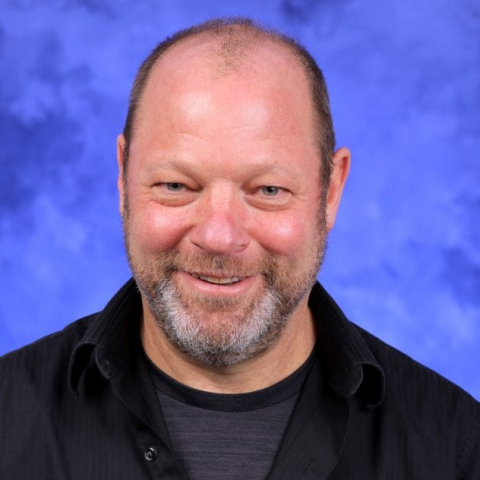Robert Sainburg
Director of the Center for Movement Science and Technology; Huck Distinguished Chair in Kinesiology and Neurology; Professor of Kinesiology and of Neurology

-
29 Recreation Building
University Park, PA - rls45@psu.edu
- 814-865-7938
Research Summary
The neural mechanisms that underlie control, coordination, and learning of voluntary movements in humans. Functional neuroanatomy of lateralized processes of motor control. Neurorehabilitation and Functional Recovery in stroke patients.
Huck Affiliations
- Neuroscience
- Integrative and Biomedical Physiology
- Center for Movement Science and Technology
- Neuroscience Institute
- Center for Brain, Behavior, and Cognition
Links
Most Recent Publications
Lateralization of acquisition and consolidation in direction but not amplitude of a motor skill task
Jisung Yuk, Robert L. Sainburg, 2024, Experimental Brain Research on p. 2341-2356
Symmetry and synchrony of bimanual movements are not predicated on interlimb control coupling
Jisung Yuk, Nick M. Kitchen, Andrzej Przybyla, Robert A. Scheidt, Robert L. Sainburg, 2024, Journal of Neurophysiology on p. 982-996
Roles of Handedness and Hemispheric Lateralization: Implications for Rehabilitation of the Central and Peripheral Nervous Systems: A Rapid Review
Brooke Dexheimer, Robert Sainburg, Sydney Sharp, Benjamin A. Philip, 2024, American Journal of Occupational Therapy
Role of proprioception in corrective visually-guided movements: larger movement errors in both arms of a deafferented individual compared to control participants
Shanie A.L. Jayasinghe, Robert L. Sainburg, Fabrice R. Sarlegna, 2024, Experimental Brain Research
The complementary dominance hypothesis: a model for remediating the ‘good’ hand in stroke survivors
Taewon Kim, Nick M. Kitchen, Brooke Dexheimer, Jisung Yuk, Candice Maenza, Paul R. Ruelos, Robert L. Sainburg, 2024, Journal of Physiology
Bilateral arm movements are coordinated via task-dependent negotiations between independent and codependent control, but not by a "coupling" control policy
Jisung Yuk, Andrzej Przybyla, Robert A Scheidt, Robert L Sainburg, 2023, Journal of Neurophysiology on p. 497-515
Adaptive control is reversed between hands after left hemisphere stroke and lost following right hemisphere stroke
Rini Varghese, James Gordon, Robert L. Sainburg, Carolee J. Winstein, Nicolas Schweighofer, 2023, Proceedings of the National Academy of Sciences of the United States of America
Ipsilesional arm training in severe stroke to improve functional independence (IPSI): phase II protocol
Candice Maenza, Robert L. Sainburg, Rini Varghese, Brooke Dexheimer, Marika Demers, Lauri Bishop, Shanie A.L. Jayasinghe, David A. Wagstaff, Carolee Winstein, 2022, BMC Neurology
Reaction time asymmetries provide insight into mechanisms underlying dominant and non-dominant hand selection
Brooke Dexheimer, Andrzej Przybyla, Terrence E. Murphy, Selcuk Akpinar, Robert Sainburg, 2022, Experimental Brain Research on p. 2791-2802
Neural Control of Stopping and Stabilizing the Arm
Shanie A.L. Jayasinghe, Robert A. Scheidt, Robert L. Sainburg, 2022, Frontiers in Integrative Neuroscience
Most-Cited Papers
Handedness results from complementary hemispheric dominance, not global hemispheric dominance: evidence from mechanically coupled bilateral movements
Elizabeth J. Woytowicz, Kelly P. Westlake, Jill Whitall, Robert L. Sainburg, 2018, Journal of Neurophysiology on p. 729-740
Effects of unilateral stroke on multi-finger synergies and their feed-forward adjustments
H. J. Jo, C. Maenza, David Good, Xuemei Huang, J. Park, Robert L. Sainburg, Mark Latash, 2016, Neuroscience on p. 194-205
Functional Deficits in the Less-Impaired Arm of Stroke Survivors Depend on Hemisphere of Damage and Extent of Paretic Arm Impairment
Candice Maenza, David C. Good, Carolee J. Winstein, David A. Wagstaff, Robert L. Sainburg, 2020, Neurorehabilitation and Neural Repair on p. 39-50
Interlimb differences in coordination of unsupported reaching movements
Jacob E. Schaffer, Robert L. Sainburg, 2017, Neuroscience on p. 54-64
Lateralized motor control processes determine asymmetry of interlimb transfer
Robert L. Sainburg, Sydney Y. Schaefer, Vivek Yadav, 2016, Neuroscience on p. 26-38
Motor lateralization provides a foundation for predicting and treating non-paretic arm motor deficits in stroke
Robert L. Sainburg, Candice Maenza, Carolee Winstein, David Good, 2016, on p. 257-272
Motor asymmetry in elite fencers
Selcuk Akpinar, Robert L. Sainburg, Sadettin Kirazci, Andrzej Przybyla, 2015, Journal of Motor Behavior on p. 302-311
Somatosensory deafferentation reveals lateralized roles of proprioception in feedback and adaptive feedforward control of movement and posture
Shanie AL Jayasinghe, Fabrice R. Sarlegna, Robert A. Scheidt, Robert L. Sainburg, 2021, Current Opinion in Physiology on p. 141-147
Is Hand Selection Modulated by Cognitive–perceptual Load?
Jiali Liang, Krista M. Wilkinson, Robert L. Sainburg, 2018, Neuroscience on p. 363-373
Laterality of Basic Motor Control Mechanisms: Different Roles of the Right and Left Brain Hemispheres
Robert L. Sainburg, 2016, on p. 155-177
News Articles Featuring Robert Sainburg
Feb 12, 2025
Sainburg named fellow of the National Academy of Kinesiology
Robert Sainburg, professor of kinesiology and neurology at Penn State and Dorothy F. and J. Lloyd Huck Distinguished Chair in Kinesiology and Neurology, was recently named a fellow of the National Academy of Kinesiology.
Full Article
Jul 22, 2024
Alternative understanding of brain leads to new treatments for stroke patients
Since the early 20th century, researchers believed that movements on the right and left sides of the body were controlled by the opposite hemisphere of the brain. However, Penn State researcher Robert Sainburg proposed the complimentary dominance hypothesis, which states that both sides of the brain have a role to play in control of both sides of the body.
Full Article
Jan 30, 2024
$4M grant funds project to make robotic prostheses more like biological limbs
Prosthetic hands that incorporate robotics can perform dexterous self-care tasks, but they are often hard to operate, requiring a user’s constant attention with a limited number of hand functions. With a five-year, $4 million U.S. National Science Foundation grant, Penn State researchers aim to make robotic protheses more useful for people living with amputations.
Full Article
Oct 14, 2021
Robert Sainburg named Huck Chair in Kinesiology and Neurology
Robert “Bob” Sainburg, professor of kinesiology and of neurology and director of the Huck Institutes’ Center for Movement Science and Technology, has been named Huck Distinguished Chair in Kinesiology and Neurology.
Full Article
Jul 30, 2019
The Other Hand
When it comes to therapy for stroke patients, sometimes treating the wrong hand is exactly right.
Full Article